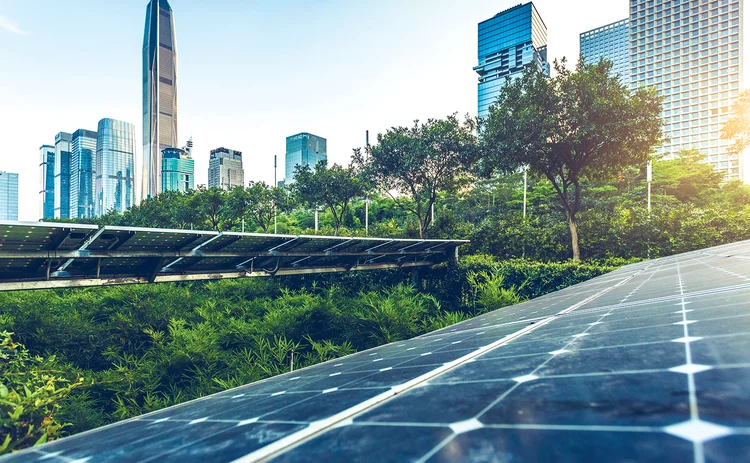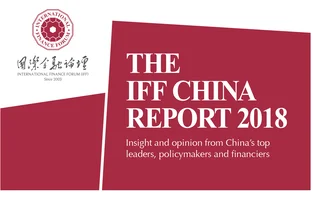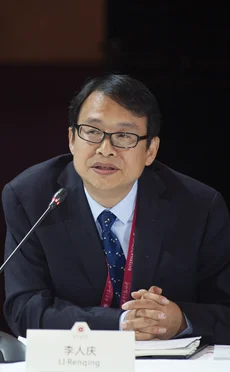
Green policies flowering in the Greater Bay Area
Li Renqing, secretary-general of the Rural Development Institute of the Chinese Academy of Social Sciences, looks at a greener, cleaner Bay Area Development, melding urban and rural settings that are set to be an example for the rest of the world


When creating innovative green growth centres, the first question to ask is where the impetus for green growth comes from. In the 1970s, debate raged on the limits of growth and the environmental problems caused, in particular, by industrial and petrochemical development. The maxim that China advocated – that ‘development is the absolute principle’ – resulted in rapid yet blind and excessive growth. China achieved staggering economic gains, yet at a huge cost to the environment, jeopardising its citizens’ well-being and the sense of achievement gained by economic development. This is the fundamental reason that drives policymakers to adjust development strategies and identify green development as the priority set out in development guidelines.
Green development effectively seeks to increase people’s happiness and well-being, which is the real goal worth pursuing. Development has many facets, of which the environmental is at the fore as a global issue. The world in which we live is a community of shared destiny, and the time is ripe to build an ecologically sound community for all mankind. However, until we identify common interests, the ideal of a shared community – a community with a shared vision for the future of mankind – will not escape the dilemma of moving away from a carbon-based economy while ensuring economic growth. A spirit of innovation is required in technology, institutions and mechanisms.

Green growth in the Greater Bay Area
Rapid and all-encompassing technological revolution in the ‘new era’ of Chinese politics and power offers both opportunities and challenges for green growth. Breaking through old constraints offers a new direction and motivation for industrial growth, while the development of clean energy provides new opportunities for environmental improvement worldwide. Environmentally friendly technology becomes the core of regional and national economic development, which commands a response to new challenges. As the regional leader of economic development, the Guangdong–Hong Kong–Macao Greater Bay Area (the Bay Area Development) is at the forefront of a mission to seize historic opportunities and lead a revolution in transfer development models and economic structure.
If China can facilitate green growth and revolution, as a pioneer, leader, model and disseminator of green growth it can be a beacon to the rest of the world. Green growth possesses great potential not only for the Bay Area Development but also for China as a developing country. China’s industrial structures and developmental models experience periodic transformations, avoiding unsuccessful paths already trod by developed countries and thus not falling into the same traps. China has made excellent progress in the IT revolution and now has the capability of making new contributions in overhauling its industrial and developmental structure.
China enjoys great privilege in its market potential and size, a powerful force driving industry transformation, especially in comparison to developed countries; yet institutional innovation is still needed to tackle existing problems. Clean development and green growth primarily require technology innovation, which is heavily supported by intellectual property and government subsidies.
On a trip to Israel, the author observed low-income individuals reducing pests, diseases and pesticide spills through technological innovation. They increased production by breeding honey bees, thereby increasing pollen transition; while innovation through infertility technology was adopted to disrupt drosophila (fruit
fly) breeding, thus inhibiting the proliferation of pests. These measures significantly reduce damage to the environment while simultaneously fostering a successful enterprise. China’s environmental issues are closely relevant to its entire economic development, characterised by externality and retardance, and can be addressed via similar innovation.
The environment is a global issue and no country can escape the consequences of environmental breakdown. The challenge is how to build an equal, fair and inclusive environmental system. In Zhejiang Province, public service fees and sanitation expenses were extended into large tracts of the countryside; although not extending to every corner, positive effects were seen in resolving rural waste-
pollution problems, where the greatest challenges lie. Pollution in rural areas is a cross-industry, cross-regional and cross-border problem demanding regional development accompanied by fiscal and social support. In these aspects, the impasse with traditional institutions must be broken, in accordance with the guidance of the 19th National Congress of the Communist Party of China, and institutional innovation between rural-urban integration.
Bolstering environmental governance
Chinese governance is distinguished by its capacity for dominance, implementation and integration, allowing it to comprehensively address the challenges emerging in regional development. Environmental problems, however, require a higher level of social participation and market mechanism. The foundation of addressing environmental concerns lies in the community of shared interests. Mere administrative measures are insufficient: market mechanisms can resolve difficulties in the livelihoods of people threatened by pollution and environmental protection. In Germany, the core environmental and green development policy was built around small and medium-sized enterprise transformation and raising employment. In the process of rural-urban integration, new employment opportunities were increased due to the new focus of industrial growth as a result of industrial transformation.
City afforestation offers huge potential for employment in the process of rural-urban integration marked by sharing and common prosperity. The community of shared interest requires connectivity, co-operation and mutual benefit to create new growth. Conversely, the environment – as a ‘joint asset’ – requires new evaluation systems and management institutions. Government needs to strictly confine sources of contamination and depend on environmental governance as a key performance appraiser, exerting its strength of integration and implementation.
Environmental issues and industrial adjustments are a core objective in the next stage of development, an area that is imperative to resolve in order to correct the imbalance and deficiency impairing the pursuit of a better life by the population. These ideas have become the social norm; and how this can be translated into changed behaviours and form new developmental institutions has become the important question.
In conclusion, innovation and openness are imperative going forward, combined with the Go Out policy and introducing advanced development experience. Based on international accord, creativity is required to resolve environmental problems and issues caused by China’s economic development, accomplishing the objective of green growth by adjusting industrial structure and by grasping the opportunities offered by the clean energy industry.
Only users who have a paid subscription or are part of a corporate subscription are able to print or copy content.
To access these options, along with all other subscription benefits, please contact info@centralbanking.com or view our subscription options here: subscriptions.centralbanking.com/subscribe
You are currently unable to print this content. Please contact info@centralbanking.com to find out more.
You are currently unable to copy this content. Please contact info@centralbanking.com to find out more.
Copyright Infopro Digital Limited. All rights reserved.
As outlined in our terms and conditions, https://www.infopro-digital.com/terms-and-conditions/subscriptions/ (point 2.4), printing is limited to a single copy.
If you would like to purchase additional rights please email info@centralbanking.com test test test
Copyright Infopro Digital Limited. All rights reserved.
You may share this content using our article tools. As outlined in our terms and conditions, https://www.infopro-digital.com/terms-and-conditions/subscriptions/ (clause 2.4), an Authorised User may only make one copy of the materials for their own personal use. You must also comply with the restrictions in clause 2.5.
If you would like to purchase additional rights please email info@centralbanking.com test test test







